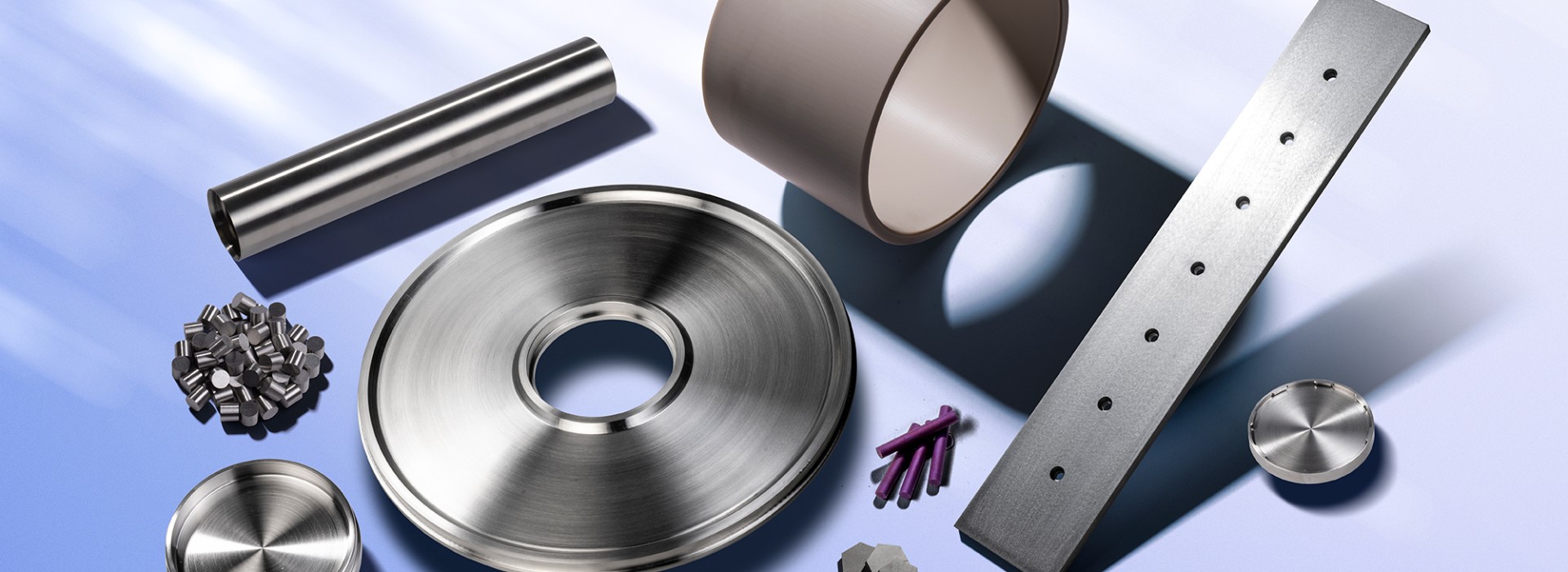Target Bonding
Proper bonding of sputtering targets is essential for maximising performance, extending target life and ensuring consistent thin film deposition. While clamping targets to the sputter cathode is possible, it often leads to cracking, warping or early failure due to insufficient cooling. For optimal results, bonding the target to a compatible backing plate is strongly recommended.
At Testbourne, we offer professional target bonding solutions tailored to a range of sputtering materials and process requirements.
Why Bond a Sputtering Target?
Bonding improves heat transfer between the target and backing plate, allowing higher power input, faster sputtering rates and more stable process conditions. A properly bonded target ensures:
- Extended service life
- Improved thermal and electrical conductivity
- Reduced risk of target breakage or delamination
- Consistent, repeatable deposition results
- Bonding also helps accommodate thermal expansion stresses that arise during operation, especially when the target and backing plate have different expansion rates.
Our Bonding Techniques
Indium-Based Metallic Bonding
Indium bonding offers excellent thermal and electrical conductivity. All indium-bonded targets include a sputtered metal barrier layer to prevent diffusion of the primary bonding alloy into the target material. This technique is compatible with both DC and RF sputtering systems and performs reliably up to 156 °C. It’s ideal when reusing the backing plate is desired, as the target can be cleanly removed after use.
Elastomer Bonding (Proprietary)
Originally developed for materials that couldn't be effectively bonded with metals, our proprietary elastomer bonding has grown to be one of our most popular methods. With a low cure temperature and high operational tolerance (up to 250 °C), this method reduces internal stress and is suitable for bonding sensitive or large-area targets. Elastomer bonding has supported single piece targets up to 110″ × 100″ and multi-piece assemblies exceeding 120″ × 110″, all while maintaining critical flatness tolerances.
Silver-Filled Epoxy Bonding Kits
For customers who prefer to handle bonding in-house, Testbourne supplies silver-filled epoxy kits containing over 90% pure silver for optimal thermal and electrical performance. These low-outgassing kits are available in 50g, 100g and 250g sizes, with guidance provided on proper application based on target size.
Backing Plates
Choosing the right backing plate is as important as the bonding process itself. Oxygen-Free High Conductivity (OFHC) Copper is the most commonly used material due to its excellent machinability and superior thermal and electrical properties.
However, in cases where the target material is not thermally compatible with copper, we also offer backing plates made from aluminium, molybdenum and stainless steel. This prevents bond failure caused by thermal expansion mismatch.
Where possible, we can recover and reuse backing plates from spent targets. Recovered plates are thoroughly inspected, cleaned and prepared for re-bonding.
Frequently Asked Questions
How long does the bonding process take?
Bonding lead times depend on the target material, bonding method and current production workload. Indium and elastomer bonding typically take a few working days, while custom bonding jobs may require more time. Please contact us for current turnaround times.
How do I know which backing plate material is compatible with my target?
We’ll help you choose the correct backing material based on thermal expansion coefficients, sputtering conditions and your desired film quality. Incompatibility can lead to shear stress and bond failure, so material matching is critical.
Is bonding recommended for all sputtering applications?
Bonding is especially recommended for high-power, long-duration or temperature-sensitive sputtering processes. For short, low-power or experimental runs, clamping may be acceptable, but bonding is strongly advised for consistent, repeatable results.
Can a bonded target be repaired if the bond fails during use?
In most cases, once a bond fails during sputtering (especially due to overheating or mechanical stress), it cannot be reused without risk. However, the backing plate may often be salvaged, inspected and prepared for re-bonding with a new target.
Get in Touch
Whether you need bonded targets for R&D or full-scale production, Testbourne offers a reliable, high-performance bonding service tailored to your needs.
Contact us for expert advice on bonding materials, backing plate compatibility and custom orders.
